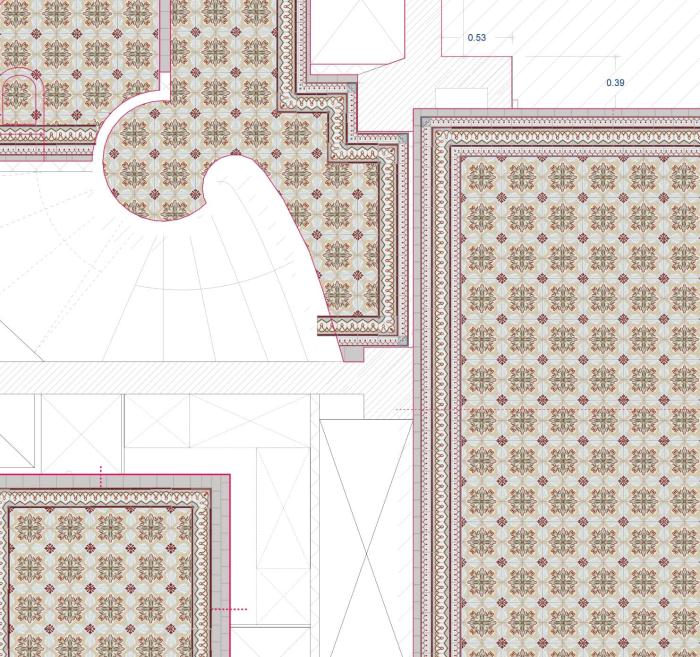Laying the Tiles
Do I need a specialist Tiler for laying the tiles?
The simple answer is 'No'. An antique ceramic tile is, at the end of the day, a ceramic tile and whether antique or modern the approach and process of laying is the same.
Nevertheless, a professional tiler is highly recommended for several reasons: -
A professional tiler will also know which cements to use to lay the tiles, depending on the surface, which grouts are required and he/she can also provide advice on how to polish, seal and wax the tiles. The Antique Floor Company recommend a mid grey (cement colour) joint. It is subtle and allows the tile to be the hero and not the joints.
For tile cements, grouts and tile cleaning products we recommend Mapei and Lithofin.
Specifically, for carreaux de ciments tiles, this PDF provides best practice for laying the floor.
- antique tiles are often geometric in form and tessellate once laid to produce a repeating series of usually two patterns - if the tiles are not well laid from the start the pattern will very quickly go out of line. We recommend 2mm joints between the tiles.
- antique floors generally come with one or more border tiles which frame the floor and there must be a marriage between the principal main tiles, known as the field tiles, and the borders. This may involve cutting the tiles with specialist equipment but also initially calculating the best configuration for the borders in the first place
- some antique tiles were handmade and as a result have slight width variances that a professional with experience can adjust for when laying the floor
- the tiles have been cleaned of their old mortar with specialist cutting equipment but there will be small variances in their thickness. Again, that is something a professional tiler will account for when he initially dry lays a section of the floor and examines the tiles pre-laying.
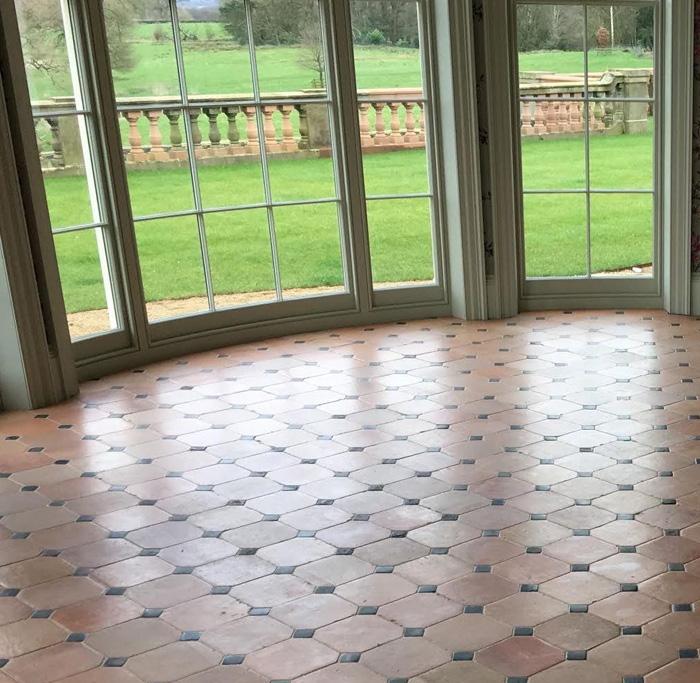
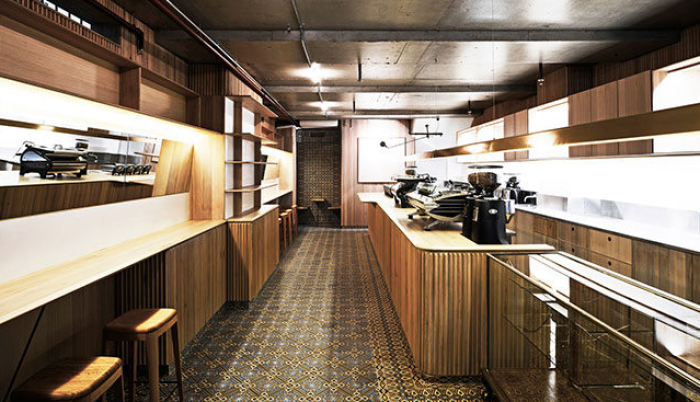
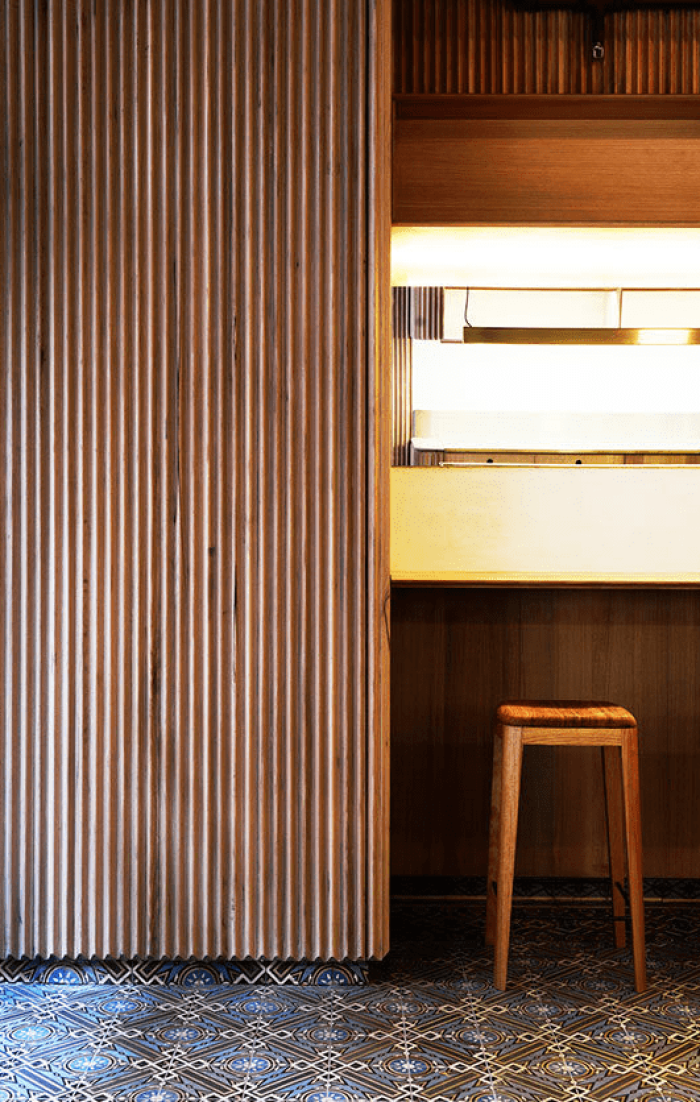
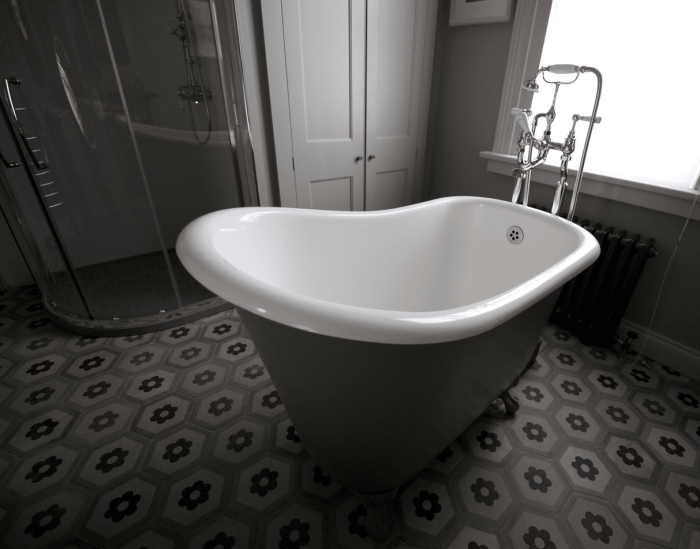
Underfloor Heating systems
Ceramic tiles and ceramic encaustic tiles can be used with an under-floor heating system as they are superb conductors and retainers of heat and, having been fired to around 1,100F degrees, there is no risk of them cracking. Conversely, carreaux de ciments tiles are unsuitable for under-floor heating systems as they are in the first instance cured rather than fired and would likely be too thick, at 2cm to 2.5cm, for heat to dissipate effectively anyway.
How do I clean and look after the tiles once laid?
Ceramic tiles
Ceramic is almost impermeable owing to its density and our antique tiles will be dispatched to you cleaned of any old cement, paint drops, old dirty wax and general surface staining. The tiles arrive ready to re-lay. Ceramic floors are low maintenance and to retain their beauty they simply require a regular washing.
To wax or not to wax...
Our antique tiles are non-glazed but have a soft sheen and it is your choice whether to wax the floor or not. We recommend non-waxing as, while wax does add an initial lustre, successive waxing (for example with a detergent containing a wax when cleaning the floor), does over time trap dirt between the films of wax it leaves on the tile. This, over the months and years that follow, traps in the dirt and the tiles begin to look dull. Wax is also very difficult to remove later when wanting to thoroughly clean the floor.
Sealants
Entirely optional for your ceramic floor and we suggest you consult your tiler when the floor is being laid.
Carreaux de ciments
To protect a newly installed floor it must be sealed during the laying as carreaux de ciment tiles are porous and will stain (you can also make the floor shinier and add lustre as carreaux de ciments tiles in their clean state are 'matt' or 'flat').
Two treatments are possible namely, 'sealing' or 'waxing'. But neither of these should be conducted until the cement adhesive used to lay and joint the tiles has had a chance to dry thoroughly otherwise sealing or waxing will simply lock humidity in the tile, which may result in small water stains appearing.
Should you stain a carreaux de ciment tile never use acid or an acid based product to attempt to clean them as the acid will dissolve the slip on the surface of the tile. Any stubborn stains can usually be removed with a specialist alkaline based tile cleaner.
Sealant products are painted on and coat the tile, leaving only a superficial layer invisible to the eye. They protect the tile by making it more resistant to grease and stains. Products like FILAFOB are recommended (www.filachim.com) as are sealants available from lithofin (www.lithofin.com)
If you're looking for something that will add a little sheen too, then products like HG GOLVPOLISH, a tile sealant that prevents stains and stubborn dirt spoiling tiles while adding lustre by deepening the colour and texture is recommended. It seals the tiles and gives a satin gloss as well as also having an anti-slip agent.
Help and advice on the fit of a floor
We appreciate that this can be a complex area. Our reclaimed and restored floors are unique and there are a finite number of field tiles, border tiles, corner tiles etc. available. We are happy, free of charge and without obligation, to look at the potential fit of a floor in your chosen area. All we require, at minimum, is a sketch with key dimensions and we can obviously work from architects drawings too. It is something we regularly do for our clients.
At a more sophisticated level we can also produce technical drawings - click here to find out more.
